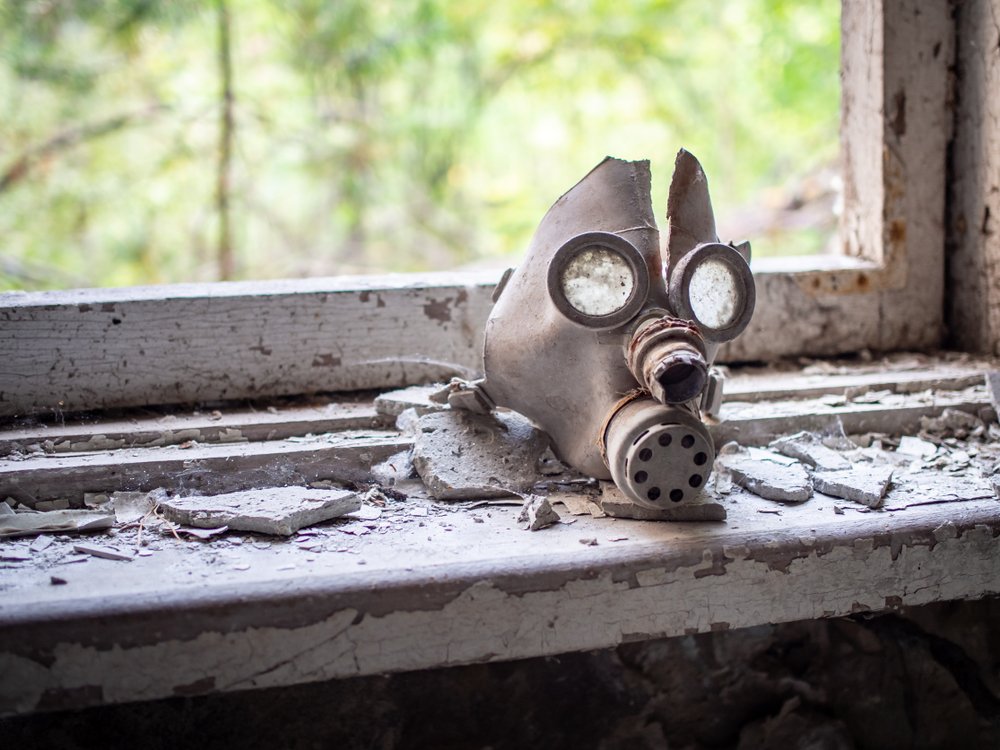
I recently started watching the HBO series Chernobyl, chronicling the events surrounding the 1986 disaster. For anyone who hasn’t seen it yet—I’d highly recommend this excellent production (It’s already deservedly won multiple awards). The great thing about TV like this, which documents real-life events (and I’d put another HBO series John Adams in the same category), is that they can really bring complex consequential events to the mass audience, in a visually stimulating and educational way.
The nuclear reactor explosion that occurred at the Chernobyl plant, near the city of Pripyat in what is now Ukraine, occurred on 26 April 1986. A series of mishaps unfolded leading to the devastating explosion, releasing a plume of deadly radioactive debris into the air. I won’t ruin the show for you by going into events in more detail, but suffice to say that a number of errors and design flaws led to the 1:23 a.m. explosion. The fallout from this occurrence was tragic, and the subject of the TV series. Nevertheless, what happened at Chernobyl could actually have been a lot worse, potentially affecting millions across Western Europe.
While very few environments could possibly get as dangerous as a nuclear reactor, health care certainly is an area which is also fraught with inherent risks, and the medical community has made tremendous progress over the last 20 years in making things a lot safer. Here are three things the events at Chernobyl can teach physicians about avoiding medical errors:
1. Following protocol. On the night of the accident, the system engineers deviated from standard protocol when performing a test on the reactor (never mind the fact that the test should have been done during the day, and not at night). It goes without saying that the first way for a professional to avoid calamitous accidents, is to remember their formal education and do what they were basically trained to do. There’s a reason why we have educational institutions and have gone through an evolution in scientific understanding. We are not cowboys when it comes to implementing evidence-based protocols.
2. Culture of fear. The best systems are the ones that exhibit full transparency and allow people to learn from their mistakes. Back in the 1980s, the Soviet Union was only just coming out of Stalin-era brutality. The engineers were clearly living in a fearful environment (in fact, many were later sentenced to time in labor camps). There’s also a scene where one of the chief scientists was threatened with being shot by a bureaucrat.
3. Ego. This is probably the number one factor that causes major errors, and is directly linked to the first point above. As the nuclear reactor went into meltdown, one of the main bosses was portrayed not wanting to acknowledge what was going wrong, and insisting that the nuclear core couldn’t have exploded. After the incident, the regime didn’t want to admit what had happened, especially to foreign powers like the USA—seeing it as a national embarrassment and source of shame. This delay undoubtedly had lethal consequences. One of the biggest signs of true strength is to hold up your hands, quickly accept a mistake, pick yourself up, and work hard to rectify things.
Much has been written in recent years about the safety comparison between health care and aviation. On many levels, this sounds very good—but in others—it’s like comparing apples with oranges. An airplane is engineered to be in the best possible shape before it flies, whereas a patient enters the doors of a hospital in the worst possible shape. The two industries are vastly different, as is a nuclear reactor. But when you hear about mistakes happening that lead to catastrophe, there are often recurrent themes, no matter the arena. The above are three of the biggest, especially for health care professionals.
Suneel Dhand is an internal medicine physician, author, and co-founder, DocsDox. He can be reached at his self-titled site, Suneel Dhand, and on YouTube.
Image credit: Shutterstock.com
